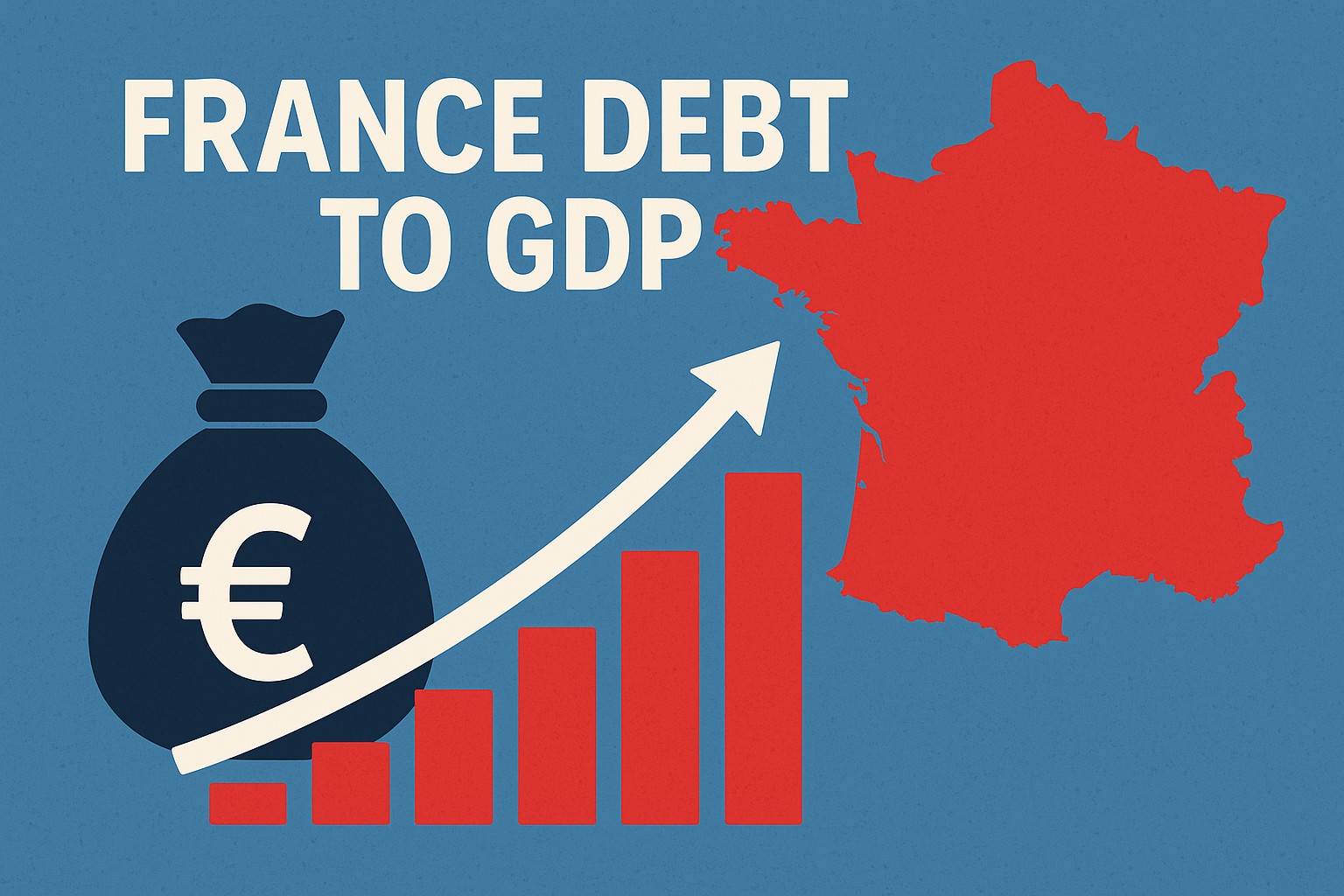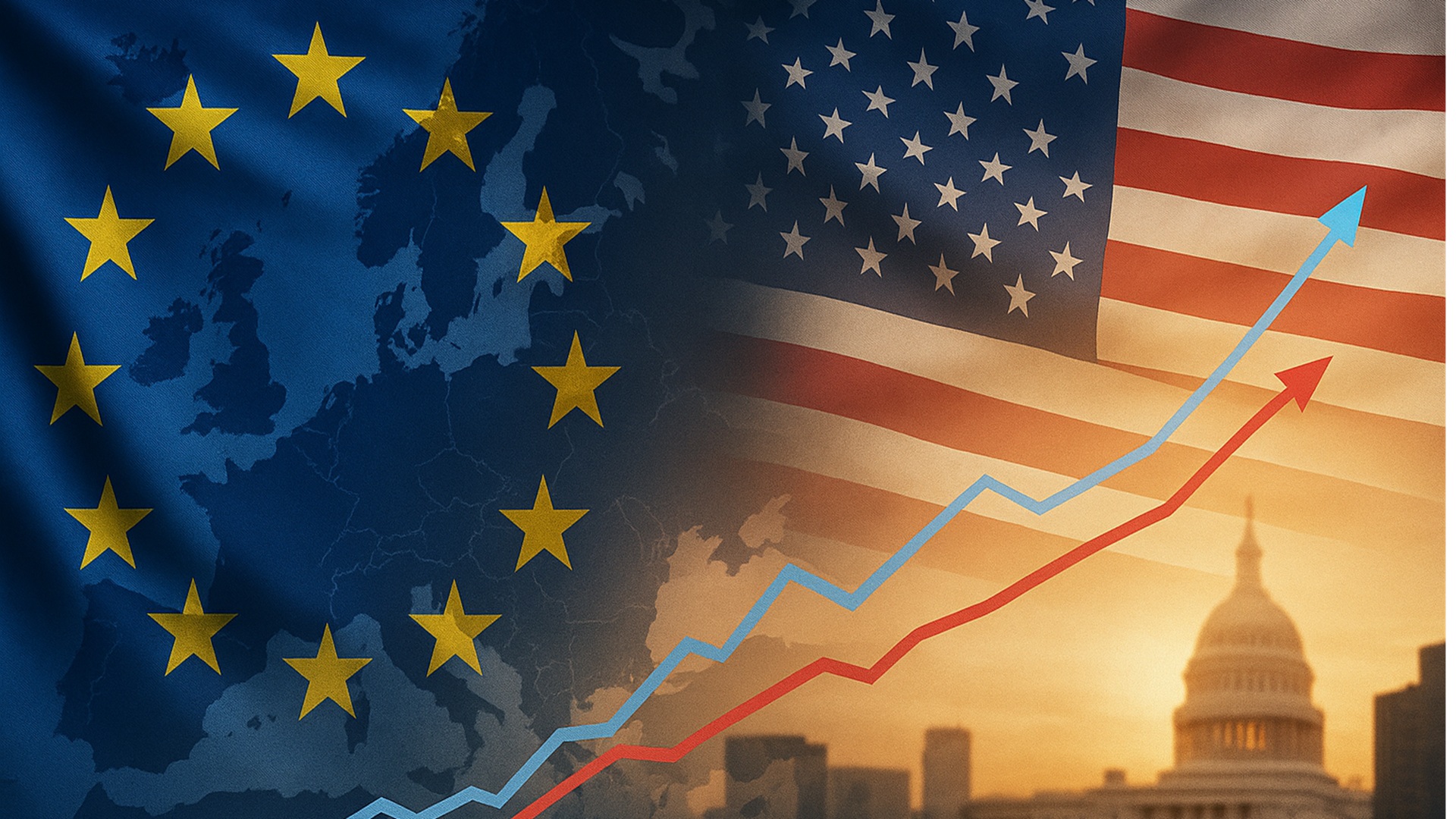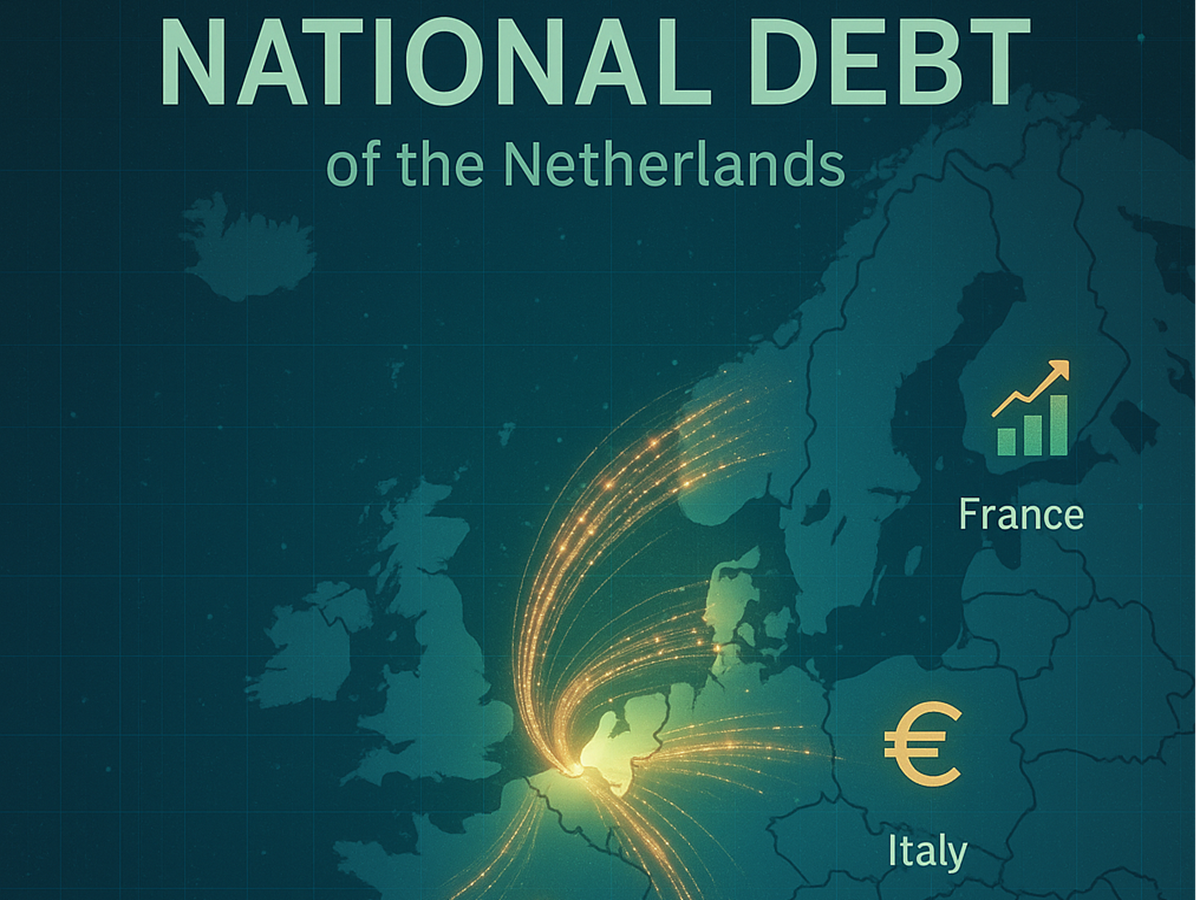The Silent Bomb Beneath Europe: France’s Debt Spiral and the Coming Reckoning for the Euro
A New York Times–style feature on debt-to-GDP, creative accounting, inflation risk, and why France’s rising debt could shake the euro.

October 2025
For years, Europe has been living beside a silent fuse. It cannot be heard in the cafés of Paris or the markets of Marseille, yet it hums beneath every government balance sheet and Eurostat spreadsheet. Public debt keeps rising, faster than growth, faster than wages, faster than reason.
Nowhere is that rhythm louder than in France, the beating heart of continental Europe and increasingly its most fragile link. France’s debt-to-GDP ratio, once a manageable figure, now hovers around 115 percent. Economists call it unsustainable. Markets call it dangerous. The French government prefers the word temporary. Temporary debts have a way of becoming permanent, and permanent debts have a way of becoming existential.
The metric that rules nations
Debt-to-GDP is a simple fraction that measures how much a country owes compared with what it produces in a year. When the ratio rises too high, symptoms appear: borrowing costs increase, interest payments devour tax revenue, and investors begin to ask the question no finance minister wants to hear: Can this country still pay its bills? Bound to the euro, France cannot print its way out of trouble. Its debt is effectively foreign, and its promise to repay depends on trust. Trust, in the world of finance, is scarcer than money.
The art of creative accounting
On paper, the European Union enforces discipline: deficits below 3 percent and debt under 60 percent of GDP. In practice, those rules have encouraged ingenuity. Governments learned to move liabilities off their balance sheets, classify spending as investment, postpone payments, or label expenses as one-time relief measures. Each maneuver is legal. Each makes the books look better than reality. France has become especially skilled at this quiet arithmetic. Every year, the numbers appear healthier than they truly are, and every year the markets believe them a little less.
The danger lies not only in the manipulation but in the erosion of credibility. When investors stop trusting the numbers, they demand higher returns, which increase borrowing costs and deepen the problem. Once confidence falters, no speech or reform can restore it quickly enough.
Lessons from a Greek tragedy
Europe has seen this story before. In 2010, Greece’s creative bookkeeping detonated into a full-scale crisis. Bond yields soared, bailouts followed, and a generation learned the word austerity. France is not Greece; its economy is larger and its institutions stronger. But the warning remains the same: truth delayed is disaster deferred. The denial that doomed Athens now echoes in Paris, and the European Central Bank may not have the political appetite to rescue everyone at once.
Inflation, the hidden predator
Inflation once seemed a relic of the 1970s. Then came a pandemic, energy shocks and war. Prices surged, central banks tightened, and the era of easy money ended abruptly. For countries heavy with debt, that change was seismic. When inflation rises, interest rates follow, and debt service costs explode. France already spends more on interest than on its military. Analysts warn that the burden could reach one hundred billion euros a year before the decade is out.
Inflation also reshapes expectations. Savings lose value, contracts become unstable, and lenders demand higher returns. A temporary rise in prices can spiral into distrust, capital flight and, in extreme cases, hyperinflation. When inflation takes hold in a high-debt country, even mild fiscal slippage can trigger panic. Bondholders sell, borrowing costs spike, and central banks are trapped between saving economies or saving the currency.
France’s political paralysis
In 2025, France’s political system is adrift. The prime minister resigned after only a few weeks. Parliament is divided and reform has become a forbidden word. The Cour des Comptes warns the country would be dangerously exposed if growth slows. Yet the latest budget keeps the deficit well above the European limit. Officials insist that growth will rebound and debt will stabilize. The charts disagree. Ratings have been cut, bond yields rose and the euro slipped. Investors whisper a word Europe hoped never to hear again: contagion.
The euro’s uncomfortable truth
The eurozone was built on the promise that discipline in one country would ensure stability for all. That promise was never fully kept. Now the European Central Bank faces an impossible choice. Raise rates to fight inflation and risk pushing France and Italy toward crisis, or keep them low to protect those economies and risk eroding faith in the currency. As France’s deficit widens, some investors ask the once-unthinkable: what happens if the euro itself loses credibility?
The domino effect
A French stumble would not remain a French problem. Rising bond spreads between Paris and Berlin would send investors running for safety. Spain, Portugal and Italy would see borrowing costs surge. Emergency bond-buying could follow, but political backlash from the north would be immediate. Populist parties would call the euro a trap and sovereignty the only escape. The result could be not only financial turmoil but a political rupture, beginning at Europe’s core.
The psychology of denial
Societies rarely confront debt until it becomes unavoidable. Debt accumulates quietly, without sirens. Each year brings new exceptions until the numbers no longer fit the page. In France, debate centers on who should pay more, not whether the state should spend less. After years of inflation and reform fatigue, voters have lost patience. Complacency replaces caution. That is how crises begin.
Europe’s nightmare scenario
Energy prices jump after a geopolitical shock. Growth stalls, inflation returns and the central bank hesitates. France’s borrowing costs climb. Investors dump long-term bonds. Downgrades follow and the euro slides. Europe faces a choice: rescue France or defend the currency. Emergency intervention sparks legal challenges and political fury. Protests fill the streets. Credit tightens. The quiet ticking beneath Europe’s economy becomes a roar.
Why this matters to everyone
The eurozone is a single organism. If confidence in French debt erodes, confidence in European debt as a whole can follow. Foreign investors retreat, the currency weakens and import prices rise, feeding inflation even in disciplined economies. Euroskeptic movements surge, claiming vindication. The euro, designed to unify Europe through stability, risks dividing it through excess.
A narrow path forward
France still possesses enormous wealth and talent. The path to safety exists but narrows each year. Three steps are urgent: publish fully transparent budgets and end off-balance-sheet accounting; limit annual spending growth to real economic growth; rebuild credibility in Brussels by meeting fiscal rules honestly, not cosmetically. If France takes that road, it could restore confidence in itself and the eurozone. If it does not, the next European crisis will begin at the continent’s core.
The clock is ticking
History does not repeat, but it rhymes. Europe ignored warnings before Greece collapsed and spent a decade paying the price. It faces the same test again, on a grander scale. When debt grows faster than output, when accounting replaces honesty and when inflation stirs, mathematics wins. France’s numbers no longer add up. If that reality remains unspoken, the next crisis will be the most predictable disaster in modern European history.
Editor’s note: This feature is an opinionated analysis written in clear, accessible language, inspired by the narrative tone of major international newspapers.
More articles
Related EU debt and fiscal insights to explore next.

20 Nov 2025
Ranked: The European Countries Where Every Citizen Owes Over €50,000
Forget the Debt-to-GDP ratio for a moment. When we look at the raw debt burden per citizen, a new and surprising map of Europe emerges. We rank the EU-27 by debt per capita.

11 Nov 2025
Can the US Handle More Debt Than Europe?
Several EU countries are already above 100% debt-to-GDP, just like the United States. Yet markets treat US debt very differently. This article explains why.

07 Nov 2025
Europe's Trillion-Euro Question: When Is National Debt an Investment?
As Europe faces the colossal costs of the green and digital transitions, the old rules of austerity are being challenged by a new logic: borrowing not for consumption, but for survival and future growth.

05 Nov 2025
The 'Swedish Wonder': National debt is falling and the live tracker is green
In an EU where most national debts are rising, Sweden is doing the opposite. With a debt ratio of just 34% and a declining counter, we look at how the 'top of the class' manages this outside the Eurozone.

01 Nov 2025
Ticking Up by €118/Second: Is the Netherlands Still Europe's 'Frugal' Leader?
The Dutch national debt is rising by €118 every second. While its 42.7% debt-to-GDP ratio remains well below the EU limit, this live tracker reveals a more complex picture compared to its European neighbors.

25 Oct 2025
Europe’s Debt Thermometer, Q2 2025: Who’s Up, Who’s Down — and Why It Matters
New Eurostat data for Q2 2025 reveals a Europe moving in two directions: while some countries’ debt-to-GDP ratios climbed, others managed to bring them down. Here’s what’s driving the shift beneath the surface.